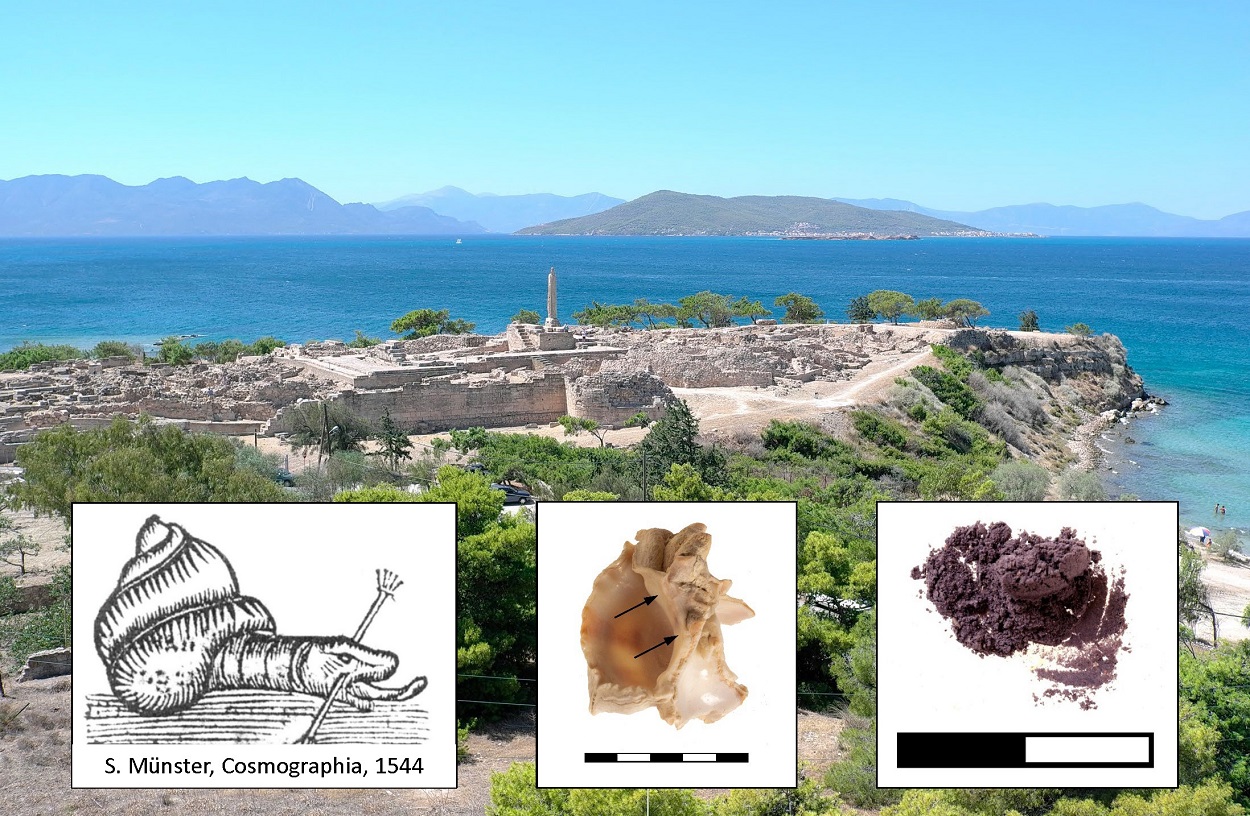Archaeologists have uncovered a Bronze Age purple dye workshop on the Greek island of Aegina.
According to a paper published in the journal PLOS ONE, excavations uncovered the 16th century BC workshop at Cape Kolonna on the island’s north-west coast.
During the Bronze Age, coloured dyes were a traded commodity in the Mediterranean region, with purple dye (also known as Tyrian purple) being the most highly valued. The pigment was expensive and time-consuming to produce, and items coloured with it became associated with power and wealth.
The dye is secreted by several species of predatory sea snails in the family Muricidae. In nature, the snails use the secretion as part of their predatory behaviour to sedate prey, as an antimicrobial lining on egg masses, and as a defence mechanism when threatened.
Traces of purple pigment were discovered on ceramic fragments, probably remnants of dye containers. This pigment was also found on grinding stones and in a waste pit containing crushed shells, predominantly from the banded dye-murex sea snail.
Excavations also found the burnt remains of piglets and lambs, which according to the researchers are sacrificial offerings to protect the workshop or bring about a bountiful snail harvest.
The authors add: “For the first time, the discovery of remarkable quantities of well-preserved pigment, together with a large number of crushed mollusk shells and a few functional facilities, allow a detailed insight into the production of purple-dye on the Greek island of Aegina around 3600 years ago. Chemical analysis by HPLC, malacological, zoological, and archaeological studies illustrate the technical process and peculiarities of early dye production and prove a workshop within the Late Bronze Age settlement.”
Header Image Credit : Department of Classics, Paris Lodron University of Salzburg, CC-BY 4.0
Sources : More than just a color: Archaeological, analytical, and procedural aspects of Late Bronze Age purple-dye production at Cape Kolonna, Aegina. https://doi.org/10.1371/journal.pone.0304340





